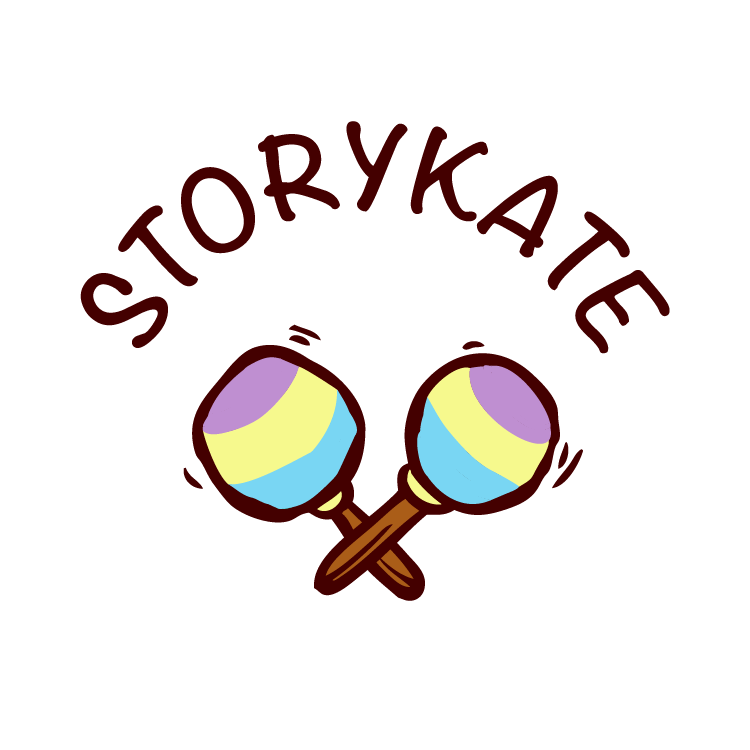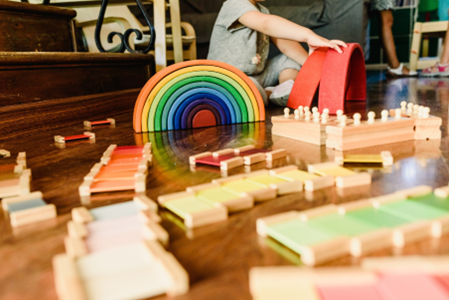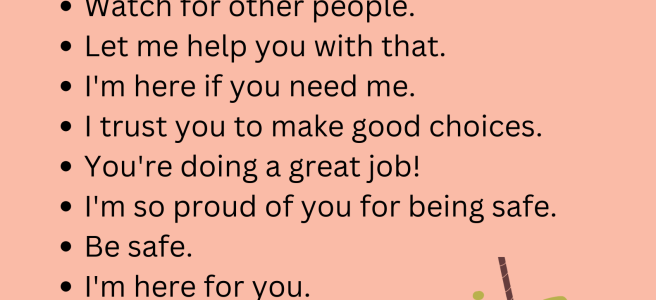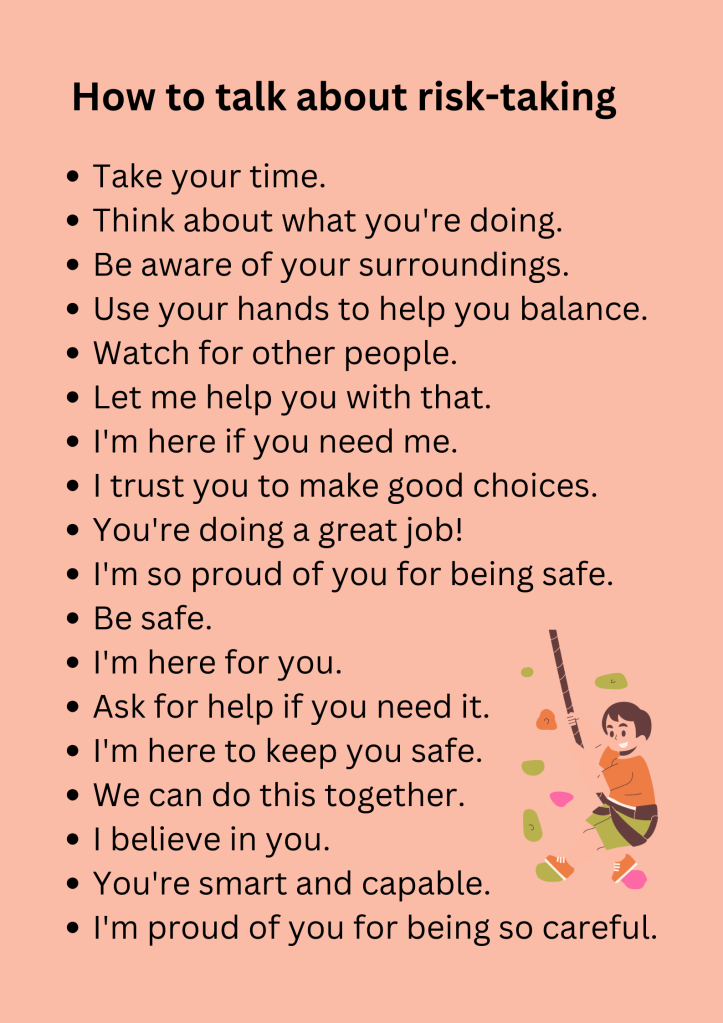A few years ago I had done this research as part of my Master’s degree in early childhood education.
I looked into the potential benefits of music experiences for supporting emergent literacy in the early childhood context.
Read the brief summary below, as it provides a rationale for considering the critical role that music plays in literacy development. In the article, I also examined the question of whether there is a link between music instruction and early literacy learning. I looked into the key research findings on music’s capacity to promote the development of phonological and phonemic awareness, support language acquisition, sight word identification, reading fluency, improve understanding of the concept of print, extend vocabulary, and strengthen fine motor skills required for successful writing. As part of the research, I considered the extra-musical effects of music and the learning potential of integrated music/literacy interventions for children with additional needs and children with English as an additional language. Here are some findings and some practical implications about how to lead integrated music and literacy experiences in early childhood settings, to simultaneously nurture emergent literacy and music learning.
Music and Literacy Correlation Linguistic and musical expression and communication go hand in hand with each other. Gardner (2011) lists both among other seven types of multiple intelligences, stating that musical intelligence emerges earlier “of all the gifts with which individuals may be endowed” (p.105). Music intelligence, according to the theorist, begins to develop as early as four months after conception. Gardner discusses some indicators or strengths of linguistic intelligence (a child learns the words to fingerplays and songs fast, loves stories, is sensitive to the meaning, sounds of words, loves talking) and musical intelligence (child is drawn to sounds, loves music and musical activities, remembers songs, perceives pitch, tone, rhythmic patterns). If not stimulated on time, both types of intelligence will diminish (Gordon, 2003; Gardner, 2011).
Anthropologists and musicologists (Greata, 2006, p.26) advocate that humans have always used language and music as modes of expression (Harris, 2009). Research supports the hypothesis that music and language have common origins and a lot of similarities and parallels. Both are symbolic systems, both are innately human, and both rely on the oral-auditory channel (Lamb and Gregory, 1993; Gardner, 2011; Anvari et al., 2002). For instance, infant speech is “musical” by nature and includes babbling and cooing. Children learn to recognize melodic and rhythmic clusters in music and phonemes in speech in early infancy. Gordon (2003) points out that the progression of learning music and spoken language is the same. Songs, lap games, rhymes, and lullabies play a significant role in child and caregiver interactions. Dissanayake (2001, as cited in Greata, 2006) even suggests that music evolved due to infant/mother interactions. Makin and Whiteman (2013) argue that beat, rhythm, and pitch, the important aspects of both spoken language and song, will have a critical impact on a baby’s emergent literacy (p. 171).
Music, as the universal language of mankind (Longfellow, n.d.), is learned through everyday exposure and might be absorbed informally, independent of formal education. A similar process underpins language acquisition. These two unique communication systems are believed to share some cortical areas and the mechanism of the brain (Hanser&McDermott, 2003). Moreover, both music and language skills are obtained aurally, orally, visually, and kinesthetically.
While literacy is no longer limited to a set of reading and writing skills children obtain by a certain mental age (Makin, Diaz, and McLachlan, 2013), the concept of “emergent literacy” (Clay, 1982) is becoming more popular to explain the process of literacy acquisition. According to Clay (1982), children become competent users of symbol systems before formal schooling. While literacy stands for listening, speaking, reading, and writing, emergent literacy is a much broader concept. It includes the understanding of the concepts, functions, and processes of reading and writing. Emergent literacy consists of alphabetic, logographic, and phonemic awareness of the functions and handling of literacy materials, the use of oral language, and scribble forms (Makin, Diaz, and McLachlan, 2013, p. 16). From this perspective, music perception and literacy learning share more common areas and skills. Some interesting interdisciplinary studies demonstrate how music aids children to gain some of these concepts and supports emergent literacy development.
Current Music/Literacy Research Findings and Debates While only a few studies have been conducted on the specific literacy learning gains attributable to music instructions, they all established that music contributes to some aspects of oral and written language development (Standley&Hughes, 1997; Lamb and Gregory, 1993; Bolduc, 2006; Runfola and Etopio, 2012; Gromko, 2005; Anvari, Trainor, Woodside and Levy, 2002; Garcia et al., 2006; Fetzer; 1994). McIntire (2007) identifies the following skills linking music and literacy: decoding, listening or aural discrimination, rhythm, communication, creating, thinking, memorization, and vocabulary expressive and fine-motor skills.
To clarify the existing music–literacy link, the researchers focus on the correlation between music and some aspects of emergent literacy, such as oral language, phonological and phonemic awareness, reading comprehension and background knowledge, sense of story, the concept of print, fluency, and pre-writing.
For many reasons, oral language has always been in focus of music/literacy research. Oral language plays a significant role in literacy development. Oral language consists of both listening and speaking and has rhythm and melody. It provides the foundation for writing and reading skills (Hill, 2013). Thus, Dickinson, Golinkoff and Hirsh-Pasek (2010) believe that language skills are a prerequisite for reading. Listening is a crucial aspect of literacy that is sometimes forgotten. For this reason, some early childhood programs pay attention to promoting auditory discrimination in musical sounds, enhancing phonological awareness, and building auditory memory and listening skills (Burton & Capell, 2012). Singing songs and lullabies to babies is a significant part of promoting emergent literacy.
Strategies to Support Oral Language Development As discussed earlier, oral language provides a strong foundation for other areas of early literacy. Music and language both are means of communication, helping to convey notions, ideas, and thoughts. Consequently, educators need to create opportunities for supporting oral language through music daily. These strategies include:
- Singing songs, rhymes, and lullabies to infants and young children.
- Encouraging children to engage in conversation while singing songs.
- Incorporating music and song into storytelling activities.
- Using songs and musical cues to transition between activities and keep children engaged.
Strategies to Support Phonological and Phonemic Awareness Phonological and phonemic awareness are critical components of emergent literacy. These skills involve the ability to recognize and manipulate the sounds of language, which are essential for reading and writing. Music can be a valuable tool for developing these skills. Strategies to support phonological and phonemic awareness through music include:
- Reading song lyrics and nursery rhymes that emphasize rhyme and alliteration.
- Encouraging children to listen for rhyming words and words that start with the same sound in songs.
- Singing songs with repetitive patterns and encouraging children to join in.
- Playing musical games that involve identifying and repeating specific sounds or rhythms.
Strategies to Introduce the Concept of Print Understanding the concept of print is a fundamental aspect of emergent literacy. This concept involves recognizing that print carries meaning and understanding the left-to-right directionality of reading. Music can be integrated into activities that introduce children to the concept of print. Strategies to do so include:
- Using song lyrics, songbooks, and other written materials during music activities.
- Pointing to words and lyrics while singing songs to help children make connections between spoken and written language.
- Encouraging children to follow along with the lyrics as they sing songs.
- Incorporating musical symbols, such as notes and musical notation, into early literacy activities.
Strategies to Improve Reading Comprehension and Fluency Reading comprehension and fluency are important components of emergent literacy. Music can be used to enhance these skills by engaging children in activities that promote listening and comprehension. Strategies to improve reading comprehension and fluency through music include:
- Reading stories with musical accompaniment to enhance comprehension.
- Discussing the themes, characters, and events in songs and stories.
- Encouraging children to retell or act out stories through music and movement.
- Using music to create a sensory-rich reading experience that captivates children’s attention.
Strategies to Support the Development of Fine-Motor Skills and Pre-Writing Fine-motor skills and pre-writing abilities are essential for later writing and literacy development. Music activities can be designed to support the development of these skills. Strategies to do so include:
- Providing opportunities for children to use instruments, such as drums, shakers, or xylophones, which require fine motor control.
- Engaging in creative activities that combine music and drawing, such as creating artwork inspired by a song.
- Encouraging children to write or draw their interpretations of song lyrics or musical experiences.
- Using rhythmic activities, like clapping, to strengthen fine-motor coordination.
Conclusion This article examined the connection between music and emergent literacy in light of classical theories and current interdisciplinary research. Some strong links were found between early exposure to both facilitated and spontaneous music experiences and the critical aspects of literacy, such as listening, reading, writing, and speaking. Researchers investigated any influence of music instruction on oral language, phonological and phonemic awareness, reading comprehension, fluency, the concept of print, sequencing, and pre-writing. Most studies acknowledge the positive correlation between music and emergent literacy, yet further research is required to understand these connections in more depth and to overcome some limitations of the published studies. For now, the evidence is enough to include meaningful music experiences in the everyday curriculum in early childhood settings to target core emergent literacy skills. Such music interventions will significantly improve the literacy skills of young children, including children with English as an additional language and children with additional needs.












